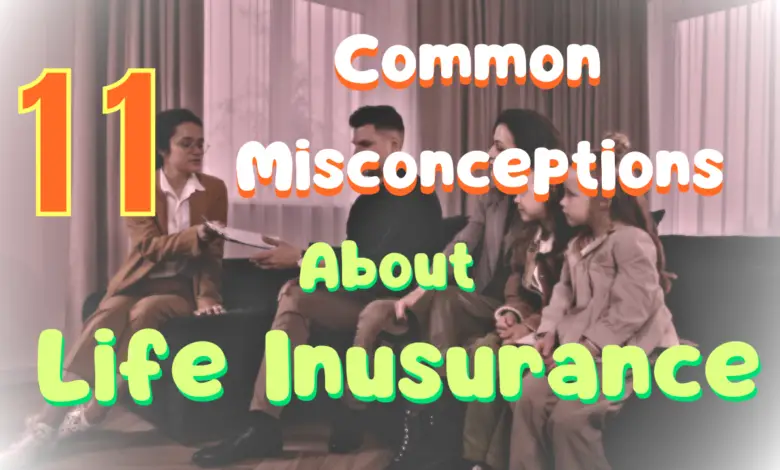11 Common Misconceptions About Life Insurance
Debunking the Top 10 Myths About Life Insurance

Misconceptions: Existence insurance is a financial product that offers security and peace of mind to countless individuals and families around the sector. But, despite its significant significance, there are numerous commonplace misconceptions surrounding the existence of insurance. In this complete article, we aim to cope with those misconceptions and offer you a clear understanding of the critical function that lifestyle coverage plays in safeguarding your economic future.

Misconception 1: Life Insurance is Only for the Elderly
Fact: One of the most prevalent misconceptions about life insurance is that it’s only necessary for older individuals. In reality, life insurance is beneficial for people of all ages. It can provide financial protection and support for your loved ones in the event of your untimely passing. The younger you are when you purchase a policy, the more affordable it typically is.
Misconception 2: Life Insurance is Too Expensive
Fact: Life insurance is often much more affordable than people think. The cost of a policy depends on various factors, including your age, health, and the type of coverage you choose. In many cases, term life insurance, which provides coverage for a specific period, can be quite budget-friendly.
Misconception 3: Employer-provided coverage is Sufficient
Fact: While some employers offer life insurance as part of their benefits package, this coverage is often limited and may not be enough to meet your family’s needs. It’s essential to assess the adequacy of your employer-provided coverage and consider purchasing an individual policy to supplement it.
Misconception 4: Stay-at-Home Parents Don’t Need Life Insurance
Fact: Stay-at-home parents play a crucial role in their families, and their contributions, such as childcare and household management, have monetary value. Life insurance for stay-at-home parents can ensure that if something were to happen to them, the surviving spouse can afford the cost of hiring help.
Misconception 5: Life Insurance is an Investment
Fact: Life insurance is primarily a financial safety net, not an investment. While some policies may accumulate cash value over time, their primary purpose is to provide a death benefit to beneficiaries. For investments, it’s advisable to explore other options, such as stocks, bonds, or retirement accounts.
Misconception 6: Only Breadwinners Need Life Insurance
Fact: Life insurance is not exclusively for the primary earners in a family. If a non-working spouse or partner were to pass away, the surviving spouse might face additional expenses, such as childcare or household maintenance. Life insurance can ease this financial burden.
Misconception 7: You Should Wait Until You’re Wealthy to Buy Life Insurance
Fact: Life insurance is a crucial component of financial planning, and it’s essential to have it in place, regardless of your current financial status. Life insurance can provide immediate financial support to your family, ensuring they are not burdened with debts or expenses in your absence.
Misconception 8: Term Life Insurance is Always the Best Choice
Fact: Term life insurance is an excellent option for many people, especially if you need coverage for a specific period. However, permanent life insurance policies, such as whole life or universal life, offer lifelong coverage and can also serve as investment vehicles. The right choice depends on your individual needs and goals.
Misconception 9: You Can Rely on Savings Instead of Life Insurance
Fact: While having savings is essential, they may not be sufficient to cover your family’s long-term financial needs in the event of your passing. Life insurance provides a reliable source of income that can ensure your loved ones’ financial stability.
Misconception 10: You Can’t Get Life Insurance If You Have Health Issues
Fact: Even if you have pre-existing health conditions, you can still obtain life insurance. While it may be more challenging to secure a policy, many insurers offer coverage tailored to individuals with various health concerns. It’s advisable to work with an experienced agent who can help you find the right policy.
Conclusion:
In conclusion, life insurance is a valuable tool for protecting your family’s financial future. By understanding and dispelling these common misconceptions, you can make an informed decision about the type and amount of life insurance that best suits your needs. Remember that life insurance is not a one-size-fits-all solution, so it’s crucial to assess your unique circumstances and consult with a qualified insurance professional to secure the coverage that provides peace of mind for you and your loved ones.




